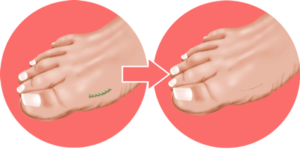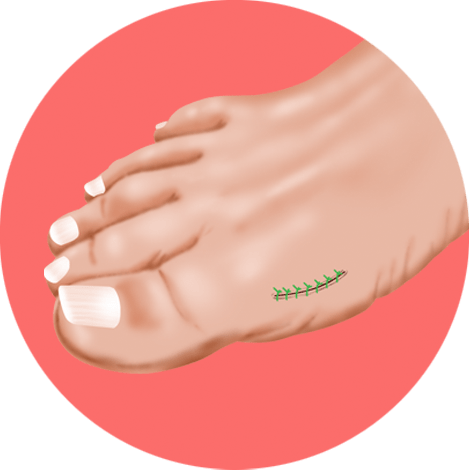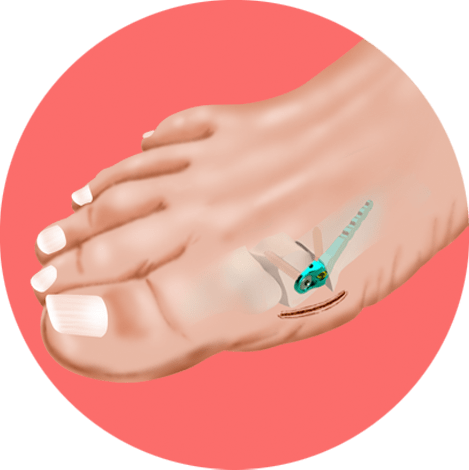
Minimally Invasive Bunion Foot Surgery

A Rapid Return to Real Life
Bunions can be painful and unsightly. One of the main reasons bunion-sufferers avoid surgery is concerns about how long they will be off their feet unable to take care of themselves or their responsibilities.
This is why CrossRoads Extremity Systems developed the miniBunion™ procedure; a cutting edge minimally-invasive technique to repair bunions. Unlike traditional procedures, the miniBunion™ technique requires a tiny incision 2 to 4-times smaller than a standard technique and requires much less trauma to the soft-tissues surrounding the toes. This minimally-invasive technique spares the blood supply to the bones and allows a smaller scar and faster rehabilitation.

The miniBunion™ scar is not only small, it is in a location that is difficult for anyone to see. Unlike most bunion procedures where the incision is on the top of the foot, the miniBunion™ incision is on the inner side of the foot. This location results in a scar that is basically invisible during day-to-day activities.
Many Patients Walk the Same Day as Surgery
Although it depends on surgeon recommendations and patient factors, many patients can walk immediately after surgery in a special postoperative shoe.
The pain from recovery depends greatly on the pain tolerance of the patient. However, surgeons who utilize the miniBunion™ technique report their patients are in less pain than would be expected from traditional bunion surgery.
Bunion correction is a very commonly insured surgical procedure. Although miniBunion™ is a new minimally-invasive procedure, it is classified as a bunion correction procedure and is therefore covered by most insurance policies.
The miniBunion™ System
The miniBunion™ system is a minimally-invasive surgical technique for implanting a micro-titanium implant. This patent-pending implant has been designed to provide immediate stability to a bunion patient’s foot to allow a fast return to activity.

Step 1:
A small incision is made on the side of the foot.

Step 2:
The toe is realigned and the miniBunion™ micro-implant is inserted.

Step 3:
The incision is closed with stitches.

Step 4:
The stitches are removed and the small scar fades over time.
What happens in Surgery?
Although the miniBunion™ technique is minimally-invasive, it still involves the precautions and elements of a standard surgical procedure. Depending on surgeon recommendations, the surgery can be performed with the patient completely asleep or the patient can be awake with anesthetic applied to the nerves in their leg to prevent feeling any pain.
In the surgery, the patient is covered with a sterile cover, but their leg is exposed and thoroughly washed with a sterile surgical washing solution.
A small incision, generally 15mm to 20mm, is made on the side of the foot. The bone is realigned with surgical instruments and the miniBunion™ implant is attached to the bone to hold the bone in proper alignment. The incision is then closed with suture.
Will This Surgery Work for Every Bunion?
More severe bunions may require a more aggressive procedure to straighten the toe. Your surgeon can help you decide which surgical option will be best for you.
You Might Also Enjoy...


5 Reasons You Want a Podiatrist on Your Diabetes Care Team

The Dos and Don’ts of Hammertoe

Do My Bunions Require Surgery?

When Does an Ingrown Toenail Require Professional Treatment?


